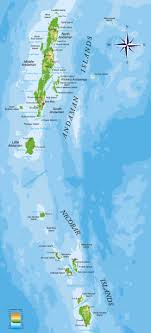
Introduction
The Andaman Islands, an archipelago located in the Bay of Bengal, are renowned for their stunning natural beauty, rich biodiversity, and vibrant cultures. As travel restrictions ease globally, these islands are becoming a popular destination for both domestic and international tourists. The importance of the Andaman Islands lies not only in their breathtaking scenery but also in their strategic location, ecological significance, and the unique cultures of the indigenous communities that inhabit them.
Natural Beauty and Biodiversity
The Andaman Islands boast pristine beaches, lush rainforests, and coral reefs that rank among the most beautiful in the world. With over 31 inhabited islands, each island has its unique charm, from the white sandy beaches of Havelock Island to the untouched forests of Baratang Island. The region is home to an array of flora and fauna, including several endemic species. The Andaman and Nicobar Islands are also the site of the only tropical rainforest in India, hosting a wide variety of wildlife such as the Nicobar pigeon and the dugong.
Cultural Significance
In addition to their natural beauty, the Andaman Islands are culturally rich, home to diverse tribal groups such as the Great Andamanese, Onge, Jarwa, and Sentinalese. These indigenous communities have a unique way of life that is intricately tied to their environment. Recent reports indicate that there is an increased focus on preserving their culture and extending support for their rights. However, the balance between tourism and the preservation of their way of life remains a pressing challenge.
Tourism Developments and Challenges
The Indian government has been promoting the Andaman Islands as a key tourism destination which has led to infrastructure development, including resorts and transportation improvements. The Ministry of Tourism has also launched initiatives to develop sustainable tourism practices in order to protect the delicate ecosystems of the islands. However, concerns arise regarding the environmental impact of increased tourist traffic and the potential harm to indigenous communities. Maintaining sustainability while promoting growth is essential for the future of the islands.
Conclusion
The Andaman Islands are an extraordinary blend of natural wonders and rich cultural heritage, making them a vital destination that warrants attention. As travel resumes and the world looks towards recovery, the focus on responsible and sustainable tourism will be crucial. The future of the Andaman Islands depends on a delicate balance—protecting their pristine landscapes and supporting their indigenous populations, all while allowing visitors to experience their unique beauty. For those seeking adventure, serenity, or the chance to connect with nature, the Andaman Islands remain a top choice, promising unforgettable memories for all.
You may also like

Exploring Monmouth: History, Attractions and Community

Understanding Glasgow Airport and Its Significance
